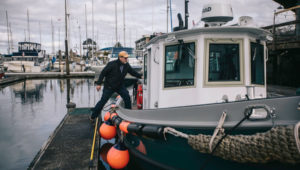August 2021
Air Zermatt: A day In the Life

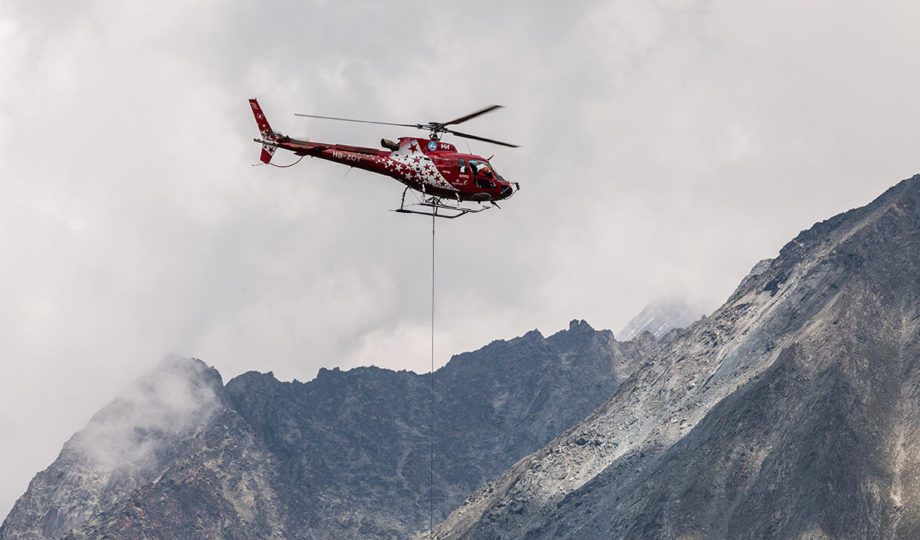
Missing hikers. Injured climbers. Iconic red helicopters launching off high-altitude mountain plateaus. Search and rescue operations in the vast and rugged Swiss Alps are a mix of strategic planning and unexpected emergencies, and at the heart of it all flies Air Zermatt. With a fleet of 11 helicopters, they fly around 2,000 rescue missions per year and carry out around 900 ambulance missions. Follow us through a day-in-the-life with the skilled professionals of Air Zermatt.

00:00 – The Day starts as it ends, a hopefully silent helicopter base
Only the rescue crew is at the heliport, prepared and ready for any emergency calls. The basic rescue crew consists of a paramedic, a doctor and a pilot. For technically demanding rescues, specifically when landing on spot is not possible, one or more rescue specialist complete the team.
06:00 Mechanics checking the helicopters
Very early, the first employees arrive at the heliport: The helicopter mechanics need to make sure all machines are functioning properly. Daily routine controls are carried out to ensure safety on all flight operations:
Three heliports and 11 helicopters means quite a lot of maintenance work. Making sure these are intact and fully working is crucial for the team’s safety and capability to work: “I mean, we sit in a human-made metal construct. Made of 1`0000 of pieces. Mostly in hostile environments to conduct rescues. So, if you do not trust or can`t trust in your equipment, you should not even start the mission” (Samuel Summermatter, Flight Operation Manager).

And this not only applies to the helicopter, but also the rest of your gear: “When selecting the equipment, we considered how it fits into our operations. We consider the quality and reliability. That way, we try to avoid unforeseen surprises with the equipment during demanding missions. This increases safety and allows the crews to focus on the job.” (Gerold Biner, CEO Air Zermatt)

06:30 Team members are gathering at the heli base
The operation managers give final details to the crews regarding planned transportation flights. Meanwhile, the flight assistants are preparing the first transport loads. All things need to be precisely planned and prepared so that the pilots and the transport crew can start their flights right on time.

The Air Zermatt team consists of so many more people than just the pilots: flight assistants, technicians, dispatch, rescue service, management and many more – overall about 75 people!
Our job does not work as a one man show. You need your team, and your team needs you.
“Our job does not work as a one man show. You need your team, and your team needs you. Each one knows about the abilities of the other and trusts in them. Therefore, teamwork is a key point and the basis to make the right decisions quickly during demanding rescue operations.“ – Samuel Summermatter, Flight Operation Manager.
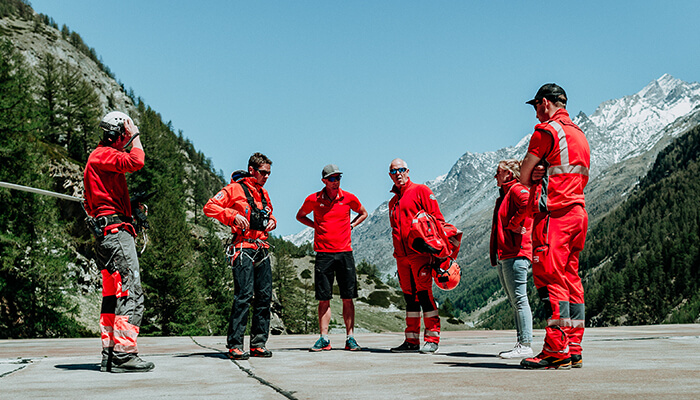
07:30 – Flight operations start with transportation flights
Around 07:30, the first helicopters leave the heliport for early-morning transportation flights. In summer, these morning transportation flights often carry workers who need to get to their workplaces high up in the mountains. Also, the materials needed for the alpine construction sites and food supplies for huts are transported.
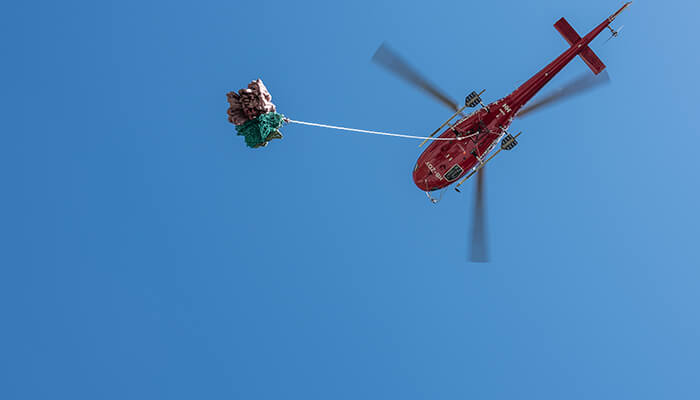
08:00 Change of shifts for rescue crews and ambulance
Shortly before 08:00, well-rested paramedics, an emergency doctor and a rescue pilot arrive to take over. In total, Air Zermatt conducts about 2,000 rescue missions per year, in peak season, up to 24 per day! Some of these involve intense search missions and difficult rescue operations. Usually, it takes the crew just very few minutes to reach the victim, but sometimes the flight is farther and location not known precisely. On average, it takes about 10-15 minutes. During winter, there are more accidents due to the popular ski resorts around Zermatt. During those months, Air Zermatt operates three rescue helicopters, in summer it is two helicopters.
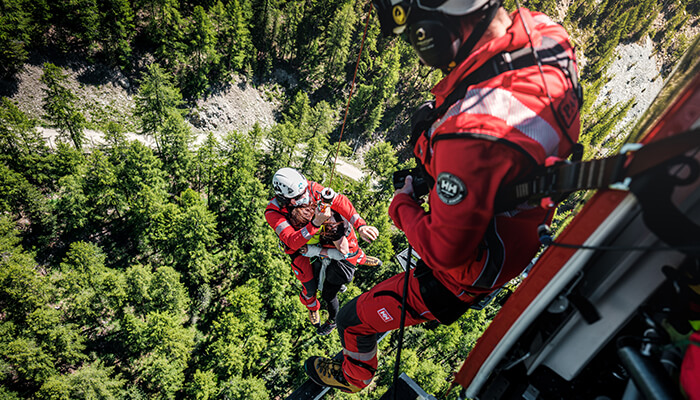
10:30 Round-flights with guests begin
When the weather is good, guests and tourists enjoy the beautiful landscape of Zermatt from above! Oftentimes, the weather is better in the mornings – in the afternoon with higher temperatures, the Matterhorn can often be covered by cumulus clouds.
12:00 – Well deserved rest
During lunch, the crews take the time to relax. At the same time, Air Zermatt tries to comply with the siesta of the people living in the village. Therefore, they try not to carry out any starts or landings during this time. But of course, in case of an emergency, everyone understands! After lunch, the operation managers give an update on the further afternoon flight program.
13:30 Flight operations continue
Transport flights to construction sites and huts are also carried out in the afternoon. Typically, there are more rescue operations in the afternoon. Hikers that have gotten injured or lost need to be evacuated. As long as the weather allows, further tourist flights are carried out in the afternoon as well.
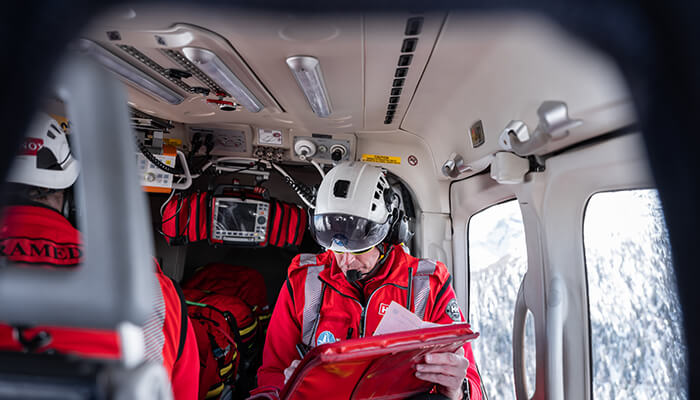
17:00 End of the day approaches
The last tourists leave the heliport with big smiles on their faces! Later afternoons give a very mystical and beautiful light setting in the mountains. Construction workers are picked up from their construction sites. Last but not least, the mechanics do their final checks on the helicopters and these are pushed back into the hangar.
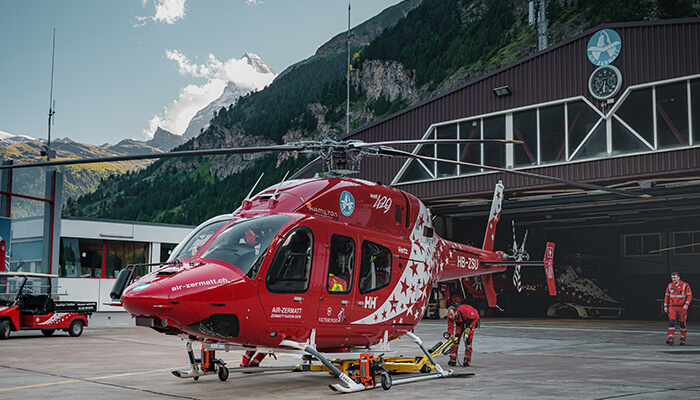
18:00 The heliport closes
Flight assistants, mechanics and dispatch leave for the evening. But the heliport is never unmanned: The helicopter rescue crew, as well as paramedics, stay behind and will hopefully have a calm night.


